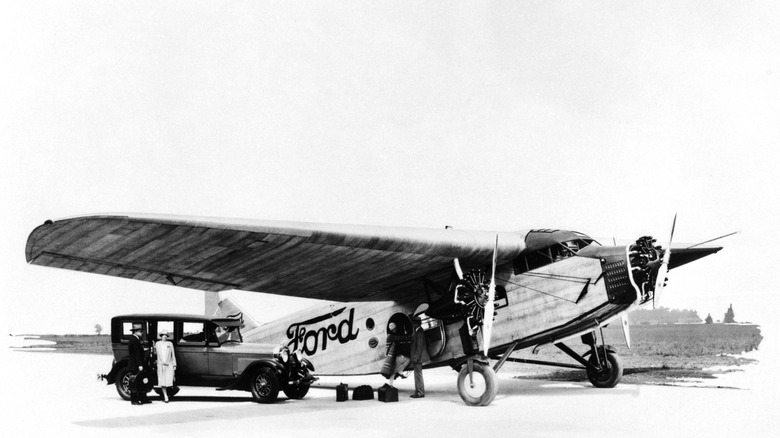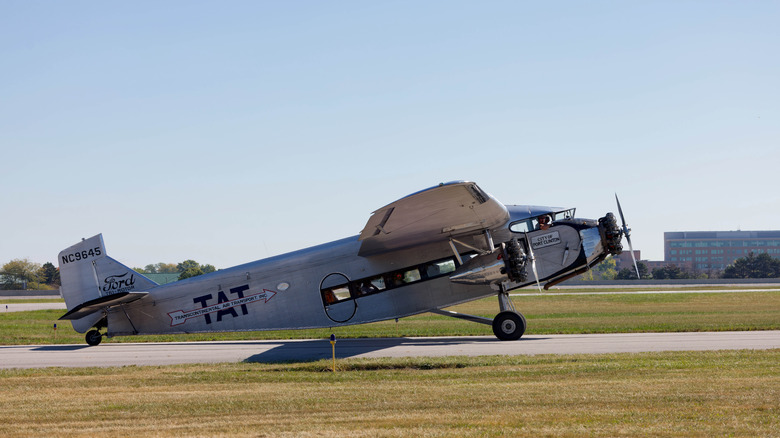How Many Ford Tri-Motors Are Still Flying Today?
The Ford Tri-motor is an all-metal plane which hails from the 1920s. While Henry Ford is certainly better known for his work in the automotive world, the Blue Oval brand has made some unexpected things in the past. Given Ford's interest in getting up into the skies, an aircraft made good sense. Only 199 of these planes were ever made, and they all came out of Dearborn, Michigan, which is where Ford has been based and building automobiles for much of its life now. Of those 199 made, only twelve are known to have survived, making them exceedingly rare indeed. Of the twelve surviving examples, just four are known to be in working order, which is why Ed Kornfield, a Tri-motor pilot, dubbed the working example he finds himself at the helm of "a flying museum." He's not wrong, with just four examples left flying today, the Ford Tri-motor plane is a real unicorn.
As is fit for such an early and important plane, employed at one time by almost every single commercial airline in America, the majority of surviving examples can be found in museums. This includes a wonderfully restored example, which resides in the Smithsonian. Although to see one in action, you'd be better off traveling to the Liberty Aviation Museum, where the affectionately named "Tin Goose" can be seen soaring the skies periodically, when showcased at neighboring airports.
Technical specs and achievements of the Ford Tri-motor
This old plane is so much more than a cool old relic with few survivors, though. The Ford Tri-motor essentially invented the concept of modern air travel, being the very first of its kind as a commercial aircraft and mass-produced airliner. Henry Ford began production of the Tri-motor back in 1925, 100 years ago, although production halted in 1929. The stock market crash was warning enough, and having invested so much in the Model T's replacement, the Ford Model A, Henry Ford clearly decided to continue concentrating his efforts on the automotive side of things.
Still, the Tri-motor had been produced, and the world would be better off for it. Neil Armstrong's very first flight as a passenger was in a Tri-motor — who knows how much of an influence that early flight could have been for him. Powering the Tri-motor are three Pratt and Whitney Wasp radial engines, which work in unison to produce 420 horsepower in the later and more powerful 5-AT model. That's enough grunt to power this century-old aircraft to a top speed of 135 mph. It's a way off being the fastest plane out there today, but in its time, this was the pinnacle of aircraft technology. Other specifications include a wingspan of 77 feet and 10 inches, a gross weight of 12,650 pounds, and a capacity of up to 15 passengers, plus two crew members.

